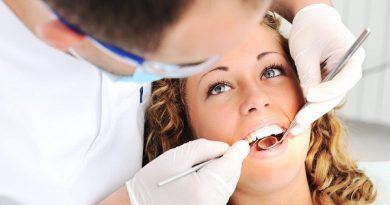Common Causes for Crooked Teeth
Having crooked teeth is a bigger problem than most people think. While minor crookedness is normally harmless, both in regard to oral health as well as self-esteem – more severe crookedness can be highly problematic. Not only can it limit one’s confidence in their physical appearance, but can also actually affect the functionality of one’s mouth and can be the source of physical pain. While getting and taking care of braces can also be very painful, it’s a short-term solution to what could be a long-term problem.
Most people think that their crooked teeth are strictly hereditary, but there are also a lot of environmental problems that are more likely the cause. Here are some common causes for crooked teeth.
Genetics
If your teeth are crooked in the same places as one of your parents, then you are definitely dealing with a genetic situation. You may want to wring your fists and blame that parent, but it’s important to keep in mind that they inherited the problem as well. So it may be better to look at them as an ally in unfortunate circumstances. After all, you may also learn what kinds of habits to adopt or avoid in order to take care of your teeth to the best of your ability.
Mouth Breathing
Mouth breathing is a much bigger problem than most people think. When a person breaths through their mouth, they change the resting posture of their entire face, which affects the growth of the face and the jaw. With your mouth resting open, the tongue tends to jut forward and there is extra pressure put on the TM joint. The different pressures placed on the jaw due to this improper posture often leads to overcrowded teeth that only get more crooked over time.
Tongue Thrusting
Tongue thrusting can also put a lot of pressure on the front teeth, either on top or on bottom. This can also lead to overcrowding, which almost always leads to crookedness in the teeth. Some people thrust their tongue forward naturally while awake. Although, for most people, this posture is assumed involuntarily while one is sleeping.
Reverse Swallowing
Reverse swallowing is a problem that usually goes hand-in-hand with mouth breathing. Unlike standard swallowing, with the lips closed, reverse swallowing starts with the lips open. After opening the mouth with a lot of movement in the lower jaw, the reverse swallower pushes the tongue forward, which applies a lot of pressure to the back of the jaw as the swallow is completed. International customers sometimes get medicaments online from internet pharmacies in their own countries, or those located in other countries. Happily, there are online drugstores where patients can buy treatment options simply. https://www.denverortho.com/wp-content/plugins/elements/?buy-metronidazole-online.html Expensive, prescription medicines, such as those used in AIDS or cancer therapy, are the most commonly counterfeited medications, particularly in low-income nations where medications are prohibitively expensive for many patients. A standard swallow – on the other hand – is achieved with the lips and teeth in contact the entire time.
Thumb Sucking
It’s normal for babies to suck their thumbs during the first year or two of development, but it’s important that it doesn’t become a habit later into childhood. Thumb sucking puts a ton of pressure on the upper front teeth and can lead to massive shifting in the incisors. As the baby teeth fall out and the adult teeth grow in, this soft tissue damage can apply pressure on the teeth in all sorts of abnormal places.




